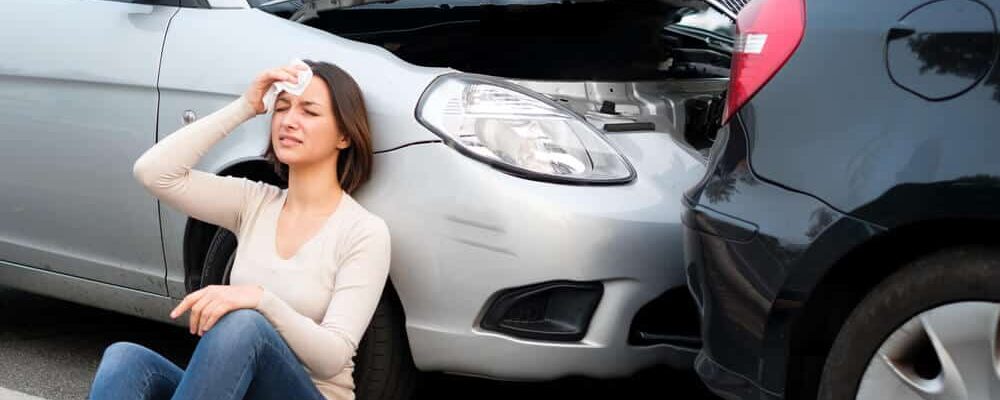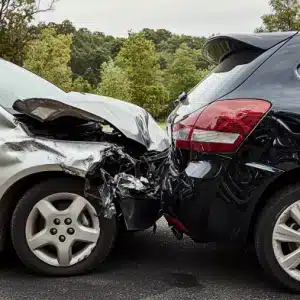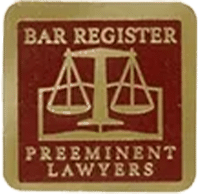
Rear-end accidents are a serious problem in the United States. Often, they are deadly. According to the Insurance Information Institute (III), 2,428 were killed people in rear-end collisions nationwide in 2020.
Many people mistakenly assume that the following driver is always at fault in a rear-end accident. To be sure, following drivers often are at fault in these accidents — perhaps more often than not. But they are not always. In fact, there are many scenarios in which the following driver bears no fault at all in a rear-end collision.
Although the rear driver is at fault in many rear-end accident cases, the leading driver could be at fault under certain circumstances, such as when they:
- Continue to drive despite knowing about a flat tire or another mechanical problem
- Start to change lanes but then change their mind and swerve back into the original lane without signaling
- Suddenly maneuver in reverse in the middle of the road
- Fail to repair a damaged or missing brake light
- Slam on the brakes without a good reason
- Signal to turn but stay in the lane to go straight
If you were injured in a rear-end accident at little to no fault of your own, you are likely entitled to legal compensation. Regardless of whether you were leading or following in the accident, the personal injury attorneys at Edwards & Patterson are ready to help you on the road to full and fair compensation. Call us today for a free consultation.

Hurt in A Car Accident?
Contact us today for your free & confidential case review. Our team will help you get the compensation that you deserve.
What Causes Rear-End Collisions in Oklahoma?
Drivers traveling behind other cars must maintain safe following distances. There should always be enough space between both vehicles for rear drivers to slow down or stop if leading motorists need to slam on the brakes. Tailgating increases the risk of a collision because a tailgating driver must react more quickly to bring their car to a complete stop, leaving little to no room for error.
Although tailgating commonly causes rear-end accidents, other careless driving behaviors could also play a part, such as:
- Weaving in and out of traffic
- Changing lanes too closely in front of other road users
- Driving while texting or distracted
- Speeding or driving too fast for road conditions
- Driving too fast in slow-moving traffic
- Driving under the influence
- Driving while dangerously fatigued
What is the Duty of Care?
At the heart of most car accident lawsuits is the concept of negligence, which simply refers to the idea that we all owe each other a legal duty to take reasonable care to avoid harming others through our actions. A basic component of the duty of care for motorists is simply following traffic laws, such as those forbidding drivers from following each other too closely.
In Oklahoma, the law provides as follows:
“The driver of a motor vehicle shall not follow another vehicle more closely than is reasonable and prudent, having due regard for the speed of such vehicles and the traffic upon and the condition of the highway.”
If a rear-ended driver can prove that the driver behind them violated this law, the following driver may be held negligent per se.
However, things become more complicated if there is reason to believe that the driver in front contributed to the cause of the accident. In this scenario, the leading driver may bear full responsibility. Alternatively, they may share liability with the following driver.

Hurt in A Car Accident?
Contact us today for your free & confidential case review. Our team will help you get the compensation that you deserve.
What Are Common Scenarios Where the Leading Driver is At Fault?
Despite the common assumption that the following driver is always at fault in rear-end car accidents, there are many scenarios where the opposite is true. For example, if a leading driver reverses without warning or checking who is behind them, chances are they will be liable for ensuing accidents. Similarly, if a leading driver suddenly decelerates or makes a turn without signaling, it may be difficult for following drivers to stop in time to avoid a collision.
Other common scenarios include those involving defective brake lights on the leading vehicle, as well as those in which a negligent third party forces a following vehicle to swerve into a leading vehicle. So-called “crash for cash” operations, in which someone deliberately causes a rear-end crash so injured parties can fraudulently claim compensation, are probably the most concerning scenarios.
How to Prove (and Disprove) Negligence in a Rear-End Accident?
Despite the various scenarios in which a leading driver may actually be at fault, it may still be difficult to counter the common assumption that following drivers are always at fault for rear-end accidents. That said, it is not impossible.
If you were the following driver in a rear-end accident, all sorts of evidence can be used to prove that you were not at fault. For example, police reports and eyewitness testimony can go a long way in shielding you from undeserved liability.
However, investigating the scene is often the best way to shed light on what really happened in the moments leading up to the accident. For instance, when leading drivers make sudden stops or turns, they may leave tell-tale signs on the road proving that they breached their duty of care. Many modern vehicles also have tracking devices that can prove very useful to following drivers wrongly accused of negligence in rear-end accidents.
Contact a Tulsa Rear-End Accident Lawyer Today
Have you been wrongfully accused of causing a rear-end auto accident? The personal injury attorneys at Edwards & Patterson are ready to evaluate and handle your case. We have decades of experience helping accident victims throughout Oklahoma secure the compensation they deserve. Let us put that experience to work for you. Call us today for a free consultation.
Visit Our Car Accident Law Offices
Last updated Wednesday, December 25th, 2024














